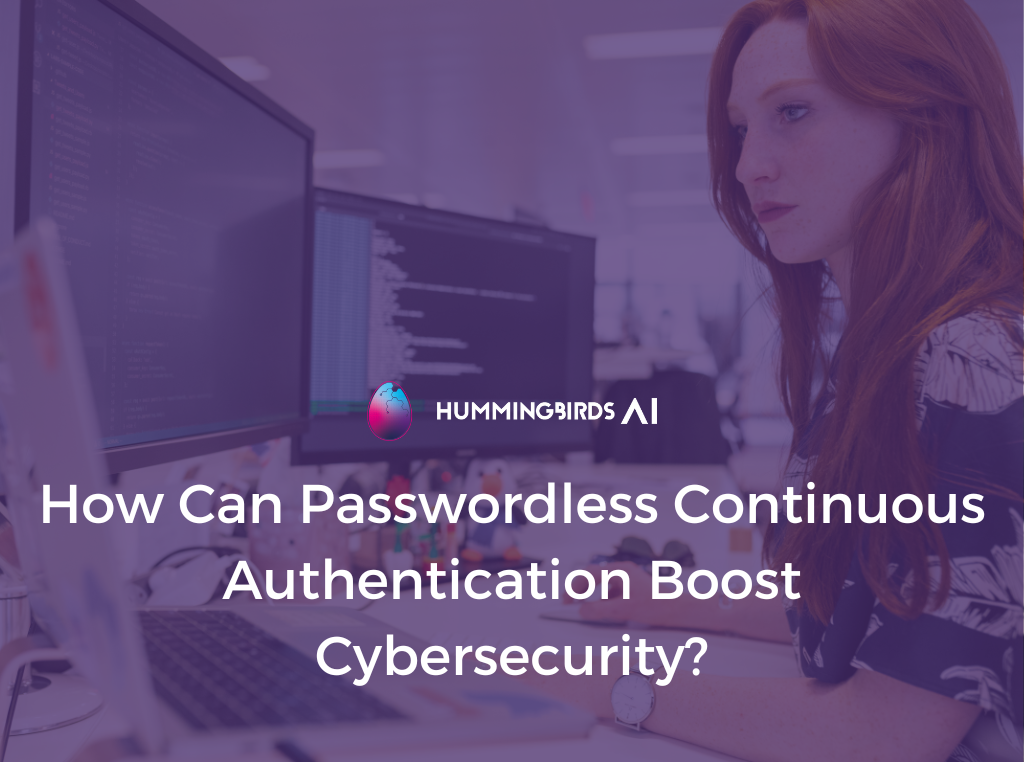How can passwordless continuous authentication boost cybersecurity?
Authentication, the way users prove their identity to log into their devices, is going through critical changes. Crisis is always a way to come out stronger and better. Multi-factor authentication (MFA) and single sign-on (SSO) have their benefits but run short to give organizations the strength their cyber defenses need. So, how can passwordless continuous authentication boost cybersecurity?
Traditional authentication under scrutiny
Numbers speak by themselves. In 2021, the total number of cyberattacks reported increased by 50% compared to 2020, with education, research, and healthcare being hit harder. The target is clear: business areas that are rapidly expanding into the digital world and therefore least prepared to efficiently protect themselves against cyber attacks.
Established organizations such as Marriott Hotels, MGM Resorts, Twitter, and most recently Uber and Cisco have fallen victim to cyber attacks. The way in? Through stolen credentials and their employee authentication method. In order to mitigate and prevent cyber attacks, organizations have implemented multi-factor authentication to add security layers to their authentication mechanisms. However, to the light of the facts, multi-factor authentication like any other security mechanism, is not infallible.
Challenges of Multi-factor authentication
Protecting sensitive data through strong authentication is critical, and the deployment of MFA makes hacking attacks harder by adding security layers. However, a hacker can intercept authentication messages sent to a second device and even a phishing-resistant MFA system won’t stop every attack.
On the user experience side, it makes users’ lives more troublesome. Users must authenticate themselves using MFA numerous times a day (let’s imagine banks and law enforcement working environments), so keeping accounts and devices secure takes time from users who could eventually, and not surprisingly, look for ways to get around the additional steps or become tired and be more vulnerable to hacking attempts.
MFA needs to be done as conveniently as possible and in such a way that it does not require the user to perform extra work to get it done. MFA and login need to eliminate human error off the authentication mechanism so that it truly becomes a smart and convenient tool.
Single Sign-On and the Cloud Dependence
Another common way of authentication is single sign-on (SSO). Single sign-on is an authentication method that allows users to authenticate into multiple applications by using just one credential, password or a set of credentials. These credentials are stored in the cloud, making them accessible anytime. Practical as it is, it is also the target of attacks. Many attacks target vulnerabilities in the cloud infrastructure. The most common drawback is precisely its most convenient feature: if hackers penetrate the cloud and get hold of that password or credential, that will enable them to access a set of networks and applications. In a way, it is like sharing credentials and hoping that they don´t get compromised because if they do, it will be a disaster. In this context, single sign-on has its own challenge to accomplish: the intrinsic weakness of passwords.
In single sign-on (SSO) password security is a major issue and the protection of the cloud infrastructure replaces the security of the physical devices. So, when it comes to real cybersecurity both positions are so close that they leave device security and authentication safety in the same place.
Why cybersecurity needs passwordless continuous authentication
Hacking will probably never vanish but we can make it as hard as possible for cyber criminals to breach into an organization. And the truth is that as long as there is something that hackers can steal to get in, vulnerabilities will persist. However, advancement in AI and biometric technology have given ways of ditching passwords. An authentication that uses the user`s unique biometric features to grant access.
When biometric technology becomes the core of the authentication mechanism, MFA becomes safer and more convenient for the users because all the issues related to passwords will go away. Specially in the case of facial biometrics, this authentication is not only passwordless but touchless and continuous: it simply detects the user`s face in front of the screen to let users in and out of the computers.
Passwordless authentication is a clear step forward for any organization. It solves the password-related problems brought by MFA. Both in MFA (multi-factor authentication) and SSO (single sign-on) the access to the device or system is secured and user-proved just at the beginning of the access, any attempts that happen after that point, will be either undetected or will require organizations to have another cybersecurity tool to take care of it. This leaves the user and the system still vulnerable and adds extra costs to the company’s cybersecurity budget.
Why would a company buy several cybersecurity solutions when it can get one to solve them both? That’s when continuous authentication and our solution GuacamoleID steps in.
How can passwordless and continuous authentication boost cybersecurity?
Continuous authentication is a passwordless and touchless technology that offers security from the moment the user logs in or starts the device till the end of the shift. Touchless continuous authentication will only make the device available to the right user, to the right and authorized face. So whenever the user steps away from the device, the screen blocks and as soon as they return, it unlocks.
This technology is touchless, continuous, automatic, and it is exactly what Hummingbirds AI has done in GuacamoleID.
GuacamoleID is a touchless continuous authentication solution used for authenticating into devices so that users don’t need to log out or close the session every time they walk away: users instantly access their computer with their face. GuacamoleID opens the screen whenever the right face is detected. This saves time and guarantees an enhanced user experience. GuacamoleID builds an encrypted 3D model of the face. This information is stored on the device, not in the cloud, which makes it inaccessible for cloud-based hacking attempts.
GuacamoleID is saving organizations money and time by making access to their devices better and faster. Contact us and learn more.
















